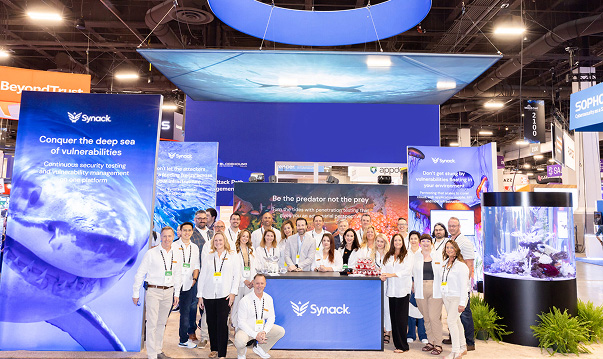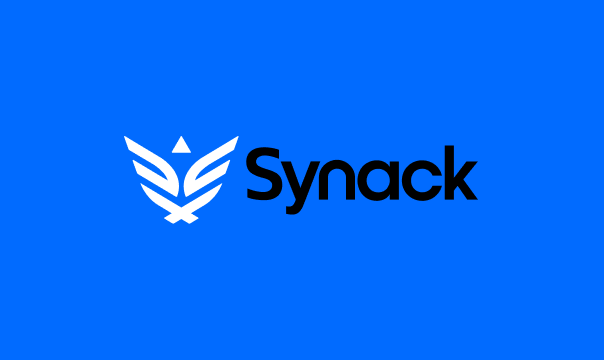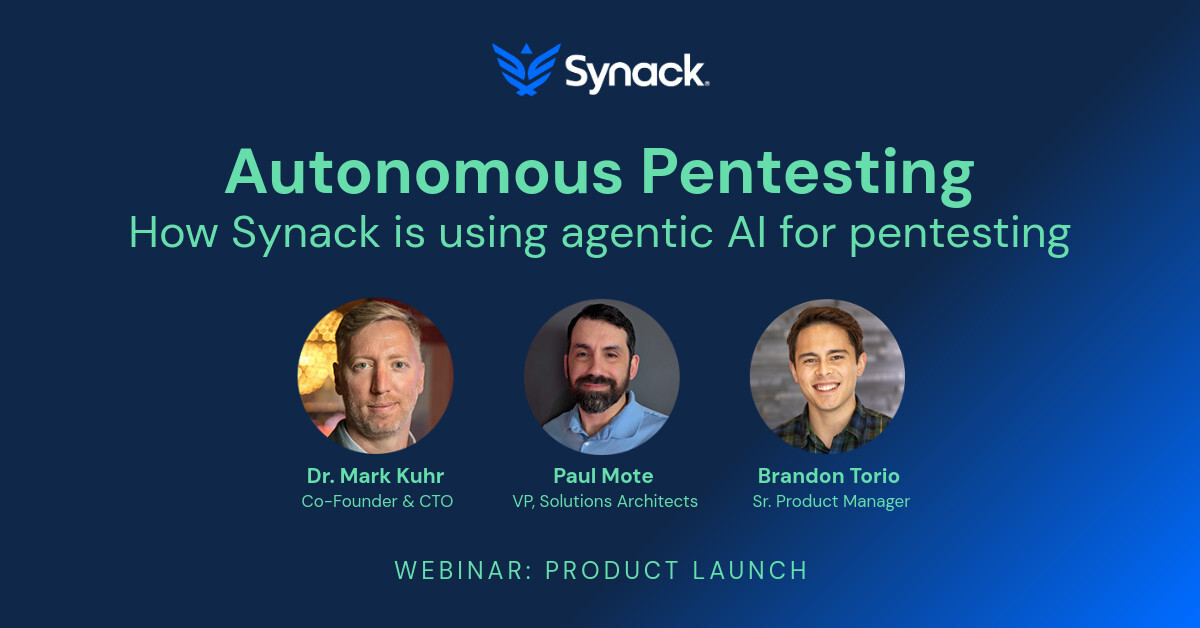As we prepare to introduce fully agentic pen testing modes at Synack, we’ve seen first‑hand how autonomous agents can expand coverage and compress cycle times. Agentic AI is clearly changing security testing for the better.
But speed without judgment creates false confidence. The right model is AI‑first and human‑validated: let agents do the heavy lifting, then use seasoned researchers to confirm, chain and translate findings into real business risk.
Our stance: Agentic AI is a crucial accelerator, not a replacement. The gold standard is AI‑accelerated testing with human‑in‑the‑loop (HITL) for assurance.
Quick definitions
- Agentic AI: Autonomous systems that plan → act → observe → adapt (e.g., enumerate hosts, probe parameters, generate payloads, and iterate from feedback).
- Human‑in‑the‑Loop (HITL): Expert researchers who design tests, validate signals, build exploits, chain steps across systems and articulate business impact.
- Canary token / canary URL: A harmless, decoy credential or URL used to detect reachability or exfiltration. If it’s ever touched, you get a high‑confidence signal that a path exists (but not proof of exploitability on its own).
Where agentic AI shines (and is production‑ready today)
- Breadth & cadence: Fast asset discovery, crawling, endpoint/parameter enumeration and basic fuzzing—continuously.
- Known‑bad checks: Commodity misconfigurations, weak TLS and cookie flags, missing headers/policies and routine CVE exposure.
- Signal scaffolding: Clustering duplicates, tracing likely root causes and surfacing highest‑likelihood leads.
- Drafting: First‑pass repro steps, request/response artifacts, and evidence templates that speed up review.
Used these ways, AI shrinks “time to first signal” and lowers the cost of breadth. But breadth isn’t assurance.
Where agentic AI falls short
1) Hallucinated vulnerabilities (false positives)
LLMs are optimized to be convincing, not necessarily correct. Common patterns we suppress with quality gates:
- CVE mismatches: Assigning a version‑specific CVE to the wrong build or product family off banner/route similarity.
- Phantom reachability: Treating an error page, redirect, or a canary ping as proof of exploitability.
- Synthetic PoCs: Payloads that read well but don’t cause a measurable security‑relevant state change.
- Context misses: Labeling sequential IDs as IDOR without testing auth boundaries; calling reflected XSS “stored.”
What humans do here: Reproduce from clean state, gather audit‑grade evidence (screens/video + request/response + environment metadata), and collapse dupes to a single, actionable root cause.
2) Blind spots (false negatives)
Classes that require context, creativity, timing or cross‑system reasoning:
- Business‑logic abuse: Coupon stacking, balance/refund arbitrage, approval‑flow skips or quota starvation via edge‑case sequences.
- Authorization flaws: Horizontal/vertical escalation that demands role modeling and negative testing (who shouldn’t see what), plus cross‑tenant leakage through complex object graphs/GraphQL resolvers.
- Race conditions: TOCTOU in ordering/transfers/entitlements; idempotency and locking bugs that surface only under precise timing.
- Chained exploits: SSRF → cloud metadata (IMDSv2) → temp creds → privilege escalation via mis‑scoped IAM; or OAuth/OIDC state confusion → account takeover.
- “Quiet” classes: Blind XSS in back‑office views; CSRF with nuanced preconditions; template/deserialization injection; path traversal with double‑encoding; NoSQL/LDAP injections that evade SQL‑centric heuristics; cloud lateral movement via shadow identities.
- Non‑HTTP surfaces: Thick clients/mobile, binary protocols, firmware/OT/ICS and kernel/container escapes—where exploit engineering, not prompt engineering, is the work.
What humans do here: Threat model, ideate abuse cases, craft bespoke payloads, build timing/replay harnesses, chain steps and establish impact.
3) Risk without judgment
Even when technically correct, AI struggles with the board‑level questions: – What’s the real‑world blast radius? – Is this exploitable in our production architecture, or only in a lab harness? – What’s the fastest, least‑disruptive fix?
What humans do here: Translate bugs to business risk (data exposure, fraud, downtime, safety), propose pragmatic remediations and communicate to stakeholders.
Agents vs. Humans — who’s better at what?
| Capability / Task | Agentic AI | Human Researcher |
| Asset discovery & crawling | ✅ | ▫️ |
| Parameter fuzzing & baseline payloads | ✅ | ▫️ |
| Known‑bad misconfig/CVE checks | ✅ | ▫️ |
| De‑duping and clustering signals | ✅ | ▫️ |
| Exploit reproduction from clean state | ▫️ | ✅ |
| Business‑logic abuse/creative chaining | ▫️ | ✅ |
| Race‑condition timing & harnesses | ▫️ | ✅ |
| Authorization modeling & negative tests | ▫️ | ✅ |
| Impact narration & remediation design | ▫️ | ✅ |
| Final assurance & audit‑grade evidence | ▫️ | ✅ |
(✅ = primary owner, ▫️ = assists)
What we mean by “humans take over”
We don’t mean “turn AI off.” We mean assume control of the next mile: validate, extend, and finish what agents start. AI continues to run for coverage and regression while humans prosecute the high‑value leads.
Containing hallucinations: our quality gates
- Exploit‑or‑it‑didn’t‑happen: No finding is “real” without a verifiable state change (data access, privilege change, transaction impact).
- Independent re‑validation: A second toolchain or a human reproduces each finding from a clean state.
- Audit‑ready evidence: Durable artifacts (screens/video, request/response pairs, environment metadata) with chain‑of‑custody.
Root‑cause de-dupe: Collapse many symptoms into one fix path.
Where fully agentic pen testing fits
- Continuous breadth at low marginal cost: Ideal for pre‑prod, frequent releases and large attack surfaces where you want constant discovery, enumeration, and fuzzing without exhausting human cycles.
- Regression & drift detection: Agents are excellent at catching re‑introduced misconfigs and policy drift between builds or environments.
- Lead generation for researchers: Fully agentic runs continuously surface high‑quality leads that our researchers prosecute for impact—speeding validation and exploit development.
- Guardrails by design: Strict scoping, safe‑action defaults, canary controls and environment awareness keep autonomy productive and safe.
What it’s not: Independent assurance without human validation, creative chaining across systems, or board‑ready risk narratives. High/critical issues that reach customers should always be human‑validated.
Will AI replace human-led pen testing?
Unlikely. Offense is adversarial and non‑stationary; the frontier moves as controls evolve. Some tasks will automate to near‑perfection (and should). But creative abuse of intent, cross‑domain chaining, and high‑impact exploitation will continue to demand human judgment.
AI’s practical goal is amplification: agents deliver machine‑speed breadth; humans deliver certainty.
How Synack delivers
- AI‑first, human‑validated: Agents provide continuous discovery, enumeration, and signal generation. Expert researchers triage, exploit, and confirm.
- Strict QA: No unverified finding reaches a customer.
- Evidence that drives fixes: Not just reports—remediation that ships.
If you’re rethinking your testing strategy—or pushing back on AI‑only claims—let’s talk about getting you both: machine scale with human assurance.







